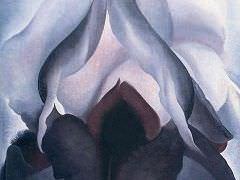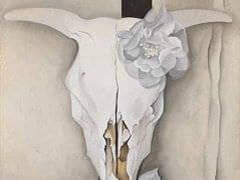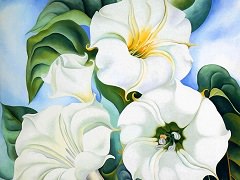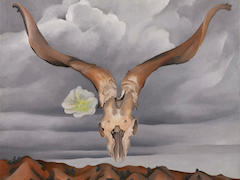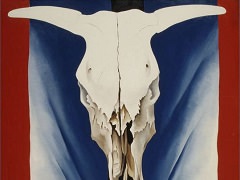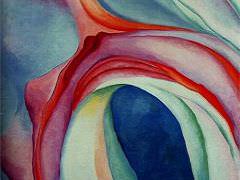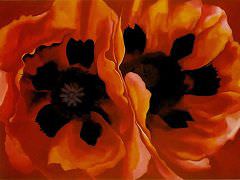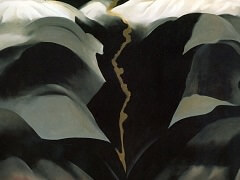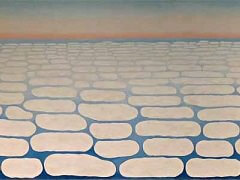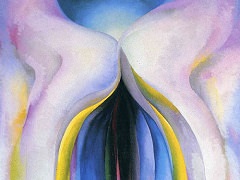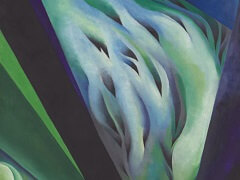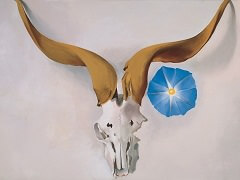Black Cross, 1929 by Georgia O'Keeffe
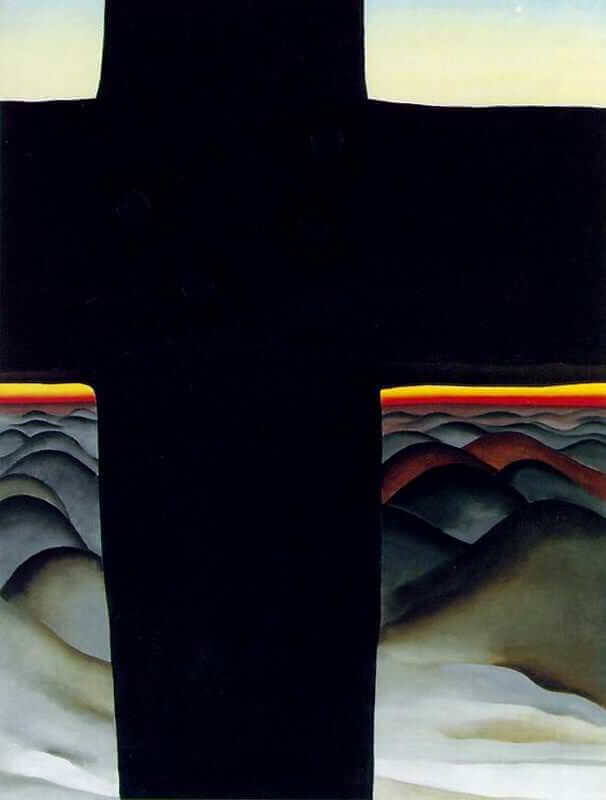
"I saw the crosses so often - and often in unexpected places - like a thin dark veil of the Catholic church spread over the New Mexico landscape," said Georgia O'Keeffe of the Southwestern territory near Taos, where she would
eventually settle. A member of the circle of avant-garde artists who exhibited at Alfred Stieglitz's New York gallery, 291, O'Keeffe married Stieglitz in 1924. She made her first visit to New Mexico in 1929. During late-night
walks in the desert, she encountered mysterious crosses, one of which she transformed in Black Cross, New Mexico. These sacred monuments were probably erected near remote chapels (moradas) by secret Catholic lay brotherhoods
called Penitentes.
O'Keeffe, a pioneer of American Modernism, emphasized the essential beauty of all of her subjects by magnifying shapes and simplifying details. She painted the cross just as she saw it: "big and strong, put together with wooden
pegs." Behind it, she depicted "those hills . . . [that] go on and on - it was like looking at two miles of gray elephants." For O'Keeffe, "painting the crosses was a way of painting the country," a beloved region where she settled
in 1949 and lived until her death at age 98.

